Features of use in the interior
Snow-white only seems boring: if you handle the light color correctly, it will have no equal. Walls and ceilings, upholstered and cabinet furniture, textiles or decor, or all together are finished in white. What are its advantages?
- Visual expansion of space. No other representative of the color range has such an ability to reflect light and, accordingly, increase the size of rooms.
- Color versatility. There is no color that can be called incompatible with snow-white.
- Psychological neutrality. Red charges with energy, causes aggression. Blue – calms. Shades of beige instill confidence. White alone does not have an effect on a person, allowing the eyes to rest and relax.
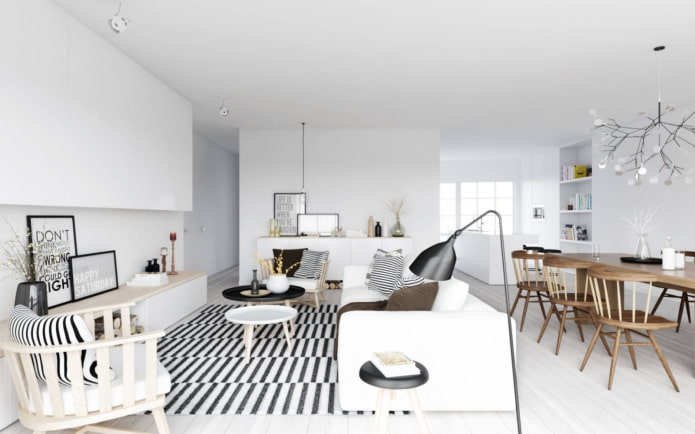
There are practically no disadvantages to the interior in white tones, but there are features that should be taken into account:
- Too cold shades of white, if used incorrectly, create the effect of an operating room, taking away all the coziness from the living space. It is better to use medium or dark tones.
- Light interiors require well-thought-out lighting: otherwise, white will look dirty in dark corners.
- An off-white interior can be depressing; to avoid this, dilute it with bright accents in the decor or trim.
In fact, there are no rules that impose or prohibit the use of white: on the one hand, it is ideal for small rooms – it makes them larger. On the other hand, it will be an excellent background in a spacious living room, literally connecting all its parts.
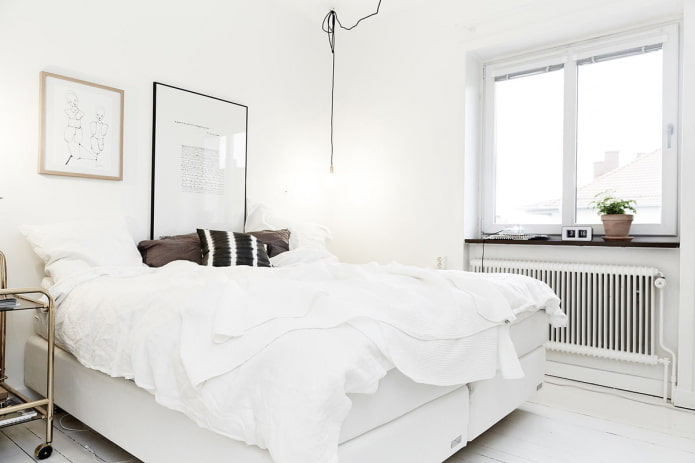
The photo shows a snow-white bedroom
What shades are there?
Those who are afraid of white interiors, considering them boring, simply do not know about the rich palette of this color. White only seems monotonous: in fact, it has a wide range of shades, including light and dark, warm and cold tones.
Let’s consider the main shades of white:
- Diamond. The coldest tone with an admixture of blue.
- Snow. Also has an admixture of blue, but less pronounced.
- Milky. A natural light tone, commonly found in nature.
- Porcelain. White with a slight hint of gray.
- Ivory. A soft, warm shade with a yellow undertone.
- Antique. A more saturated, sunny shade.
- Cameo. Complex tone with a pink admixture.
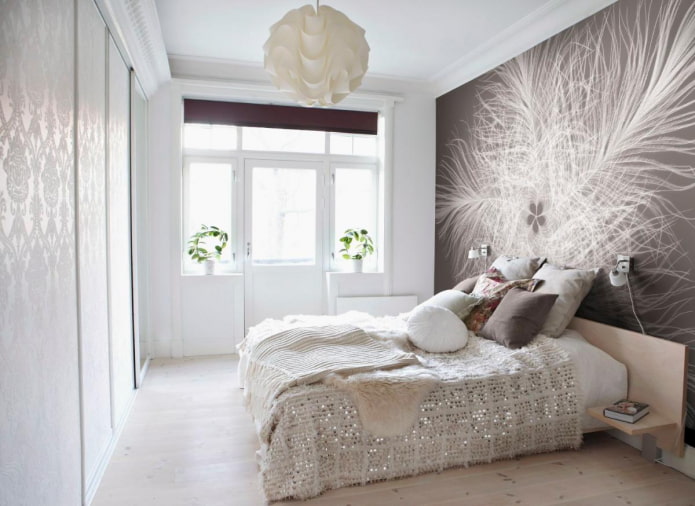
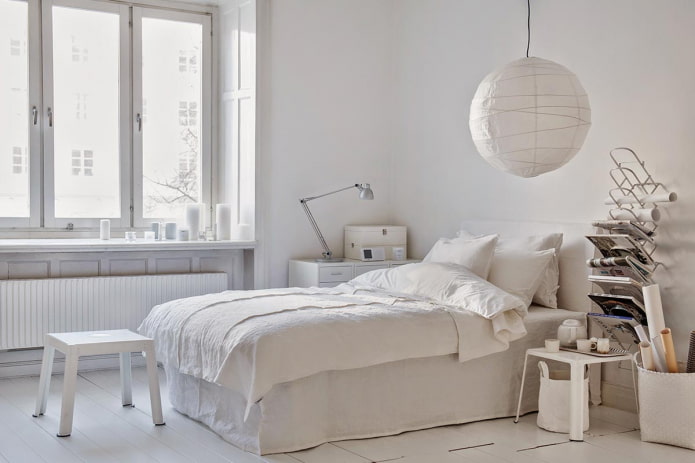
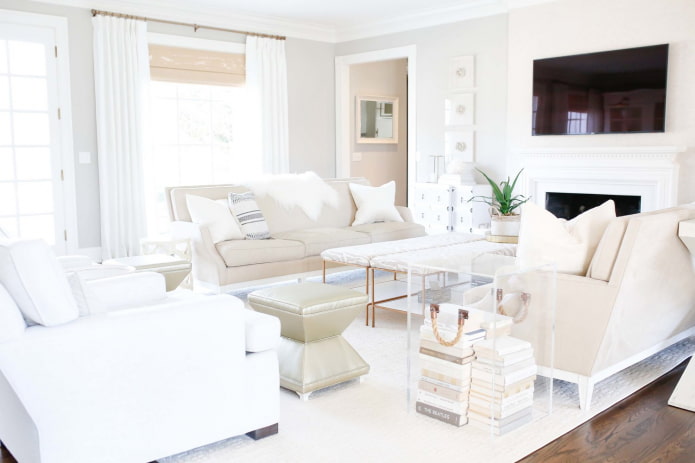
Choosing the right one for an apartment in light colors is not difficult: the main thing is to know which side the windows face and how much natural light is present in the room (not whether the sun is blocked by a tree under the window or a building standing nearby).
If the room is sunny, take cold undertones (admixture of silver, blue, gray). For northern or western rooms, on the contrary, warm shades are needed (with yellow, beige, powder, orange).

The photo shows cold shades in a Scandinavian living room
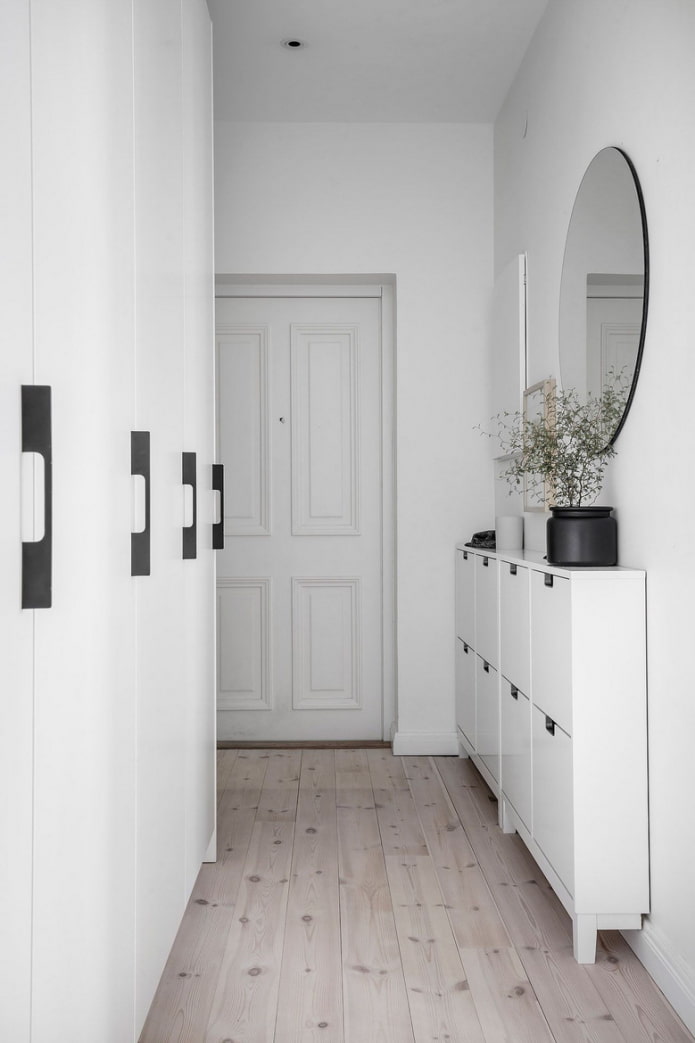

The best combinations of white
Although white can be combined with any other color, among all possible options there are duets or trios that are loved by designers around the world.
For example, a contrasting duet with black. Expressive, but at the same time achromatic and pleasing to the eye. Can be the basis of modern high-tech and minimalist styles. To keep the apartment in light colors, the background remains snow-white, and small accents are made black. Black and white prints and unusual textures are always relevant.
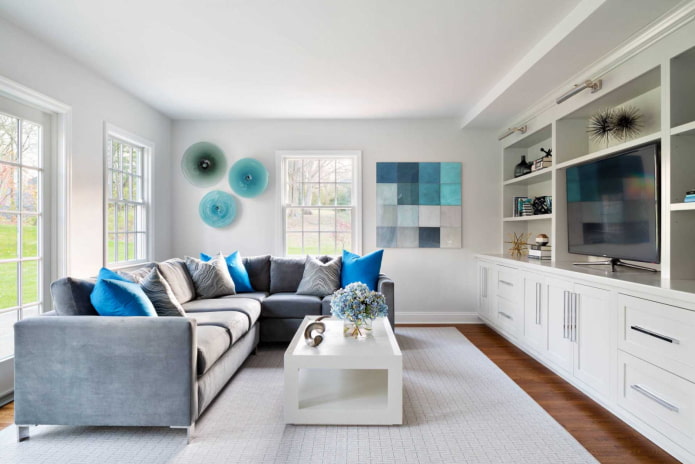
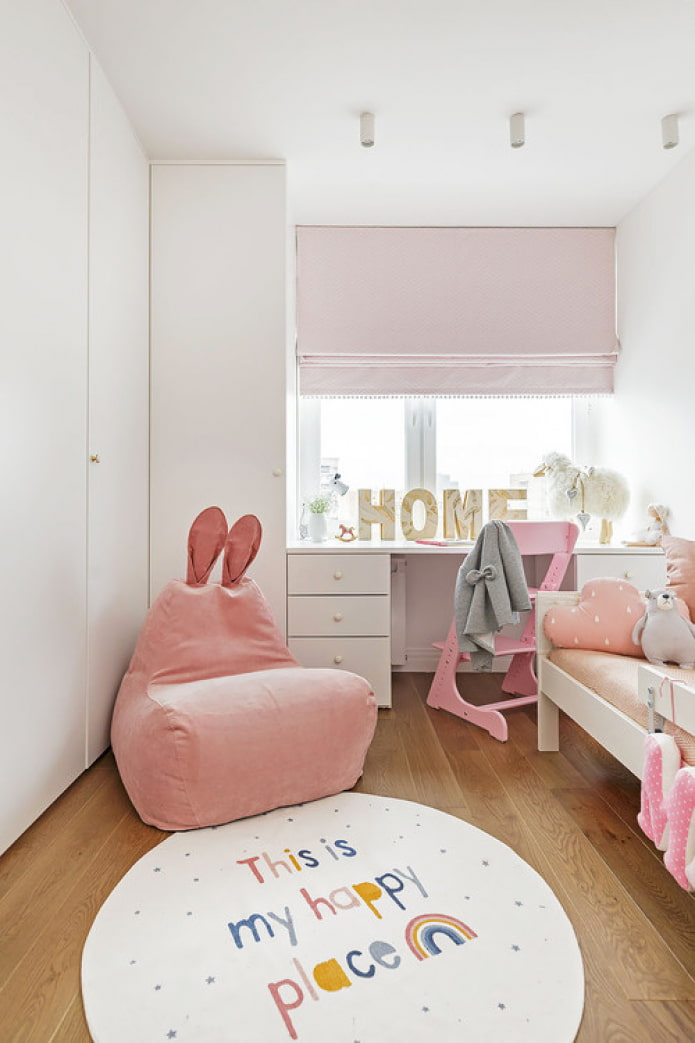
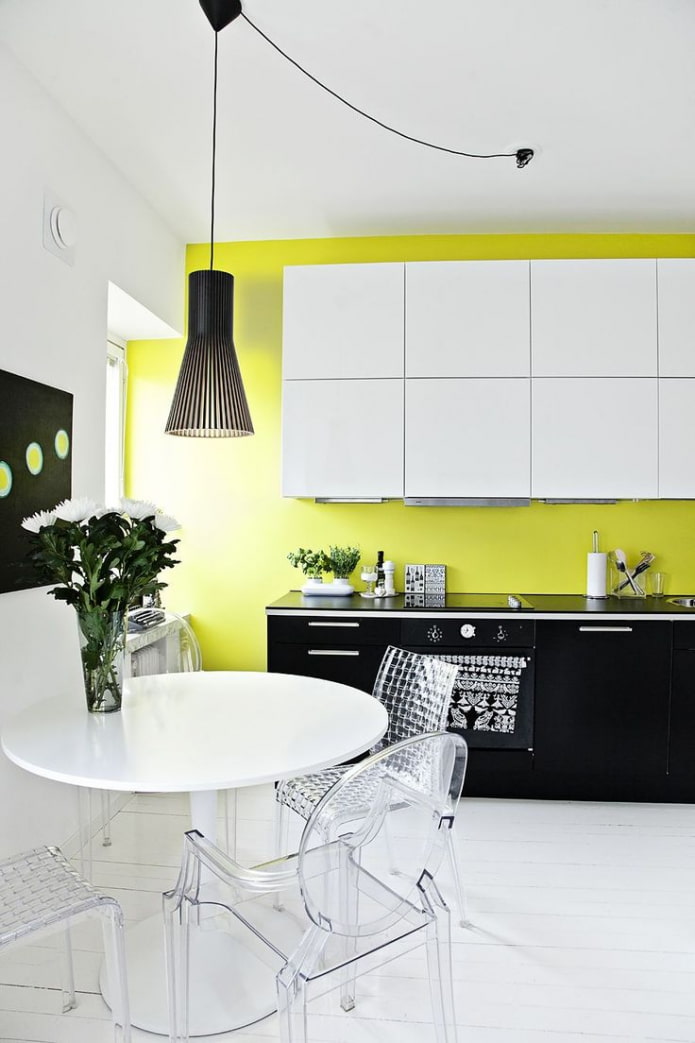
Accents in a white interior can be highlighted with something brighter: lemon, light green, azure, bright orange. The companion is selected based on temperature: cold snowy needs blue, warm antique needs orange.
If you want to keep the finish in light tones, bright colors are unacceptable: instead, you should use a pastel range. Pale unsaturated shades will not look like spots in contrast, but can create the feeling of a colorful interior.
Beige and gray will complement snowy in a classic or Scandinavian interior. Monochrome combinations look harmonious, leaving the possibility of adding a third tone in the details.
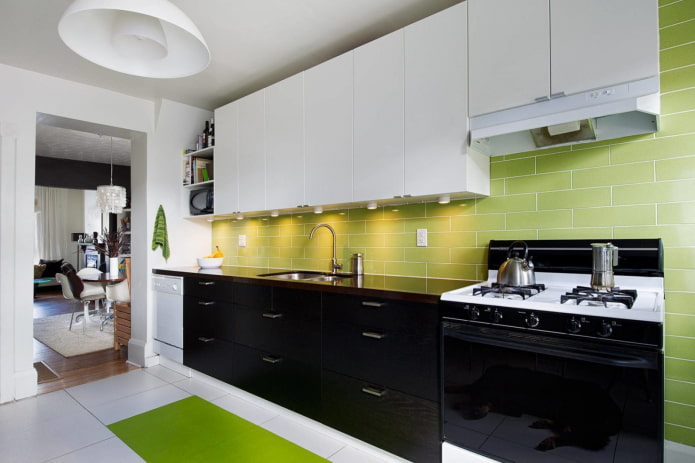
In the photo, a combination with black, green

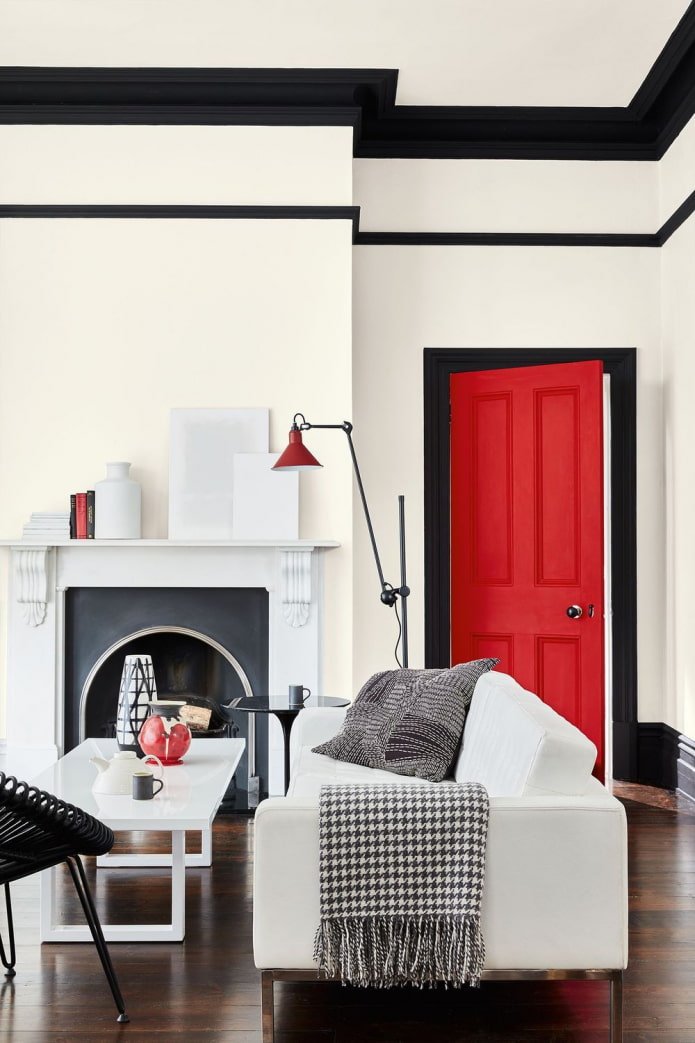
Finishing options
If a pure white ceiling has long been considered the standard, then white walls in the house still raise a lot of questions. Some people think that a crystal snow interior will resemble an operating room.
But in fact, the white color of the walls is a clean slate, spurring the flight of fantasy. Having such a canvas, you can depict anything on it: from restrained classics to eccentric fusion. At the same time, if all the finishing is snow-white, the furnishings (furniture, decor) can be changed at your discretion at least every six months, without the need to make repairs.
Important! It is better to choose washable paint or wallpaper: walls get dirty easily and should also be easy to clean.
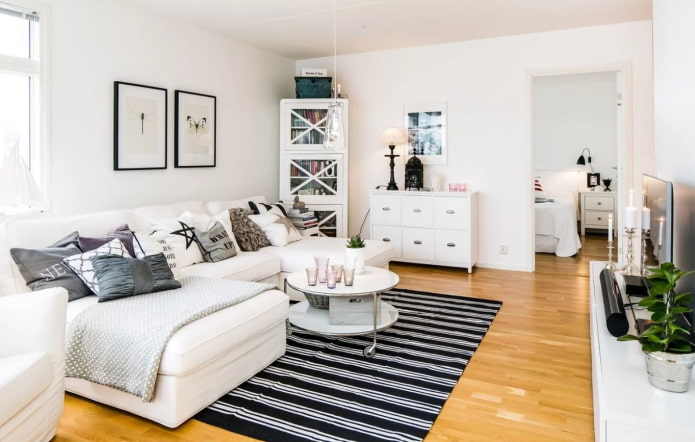
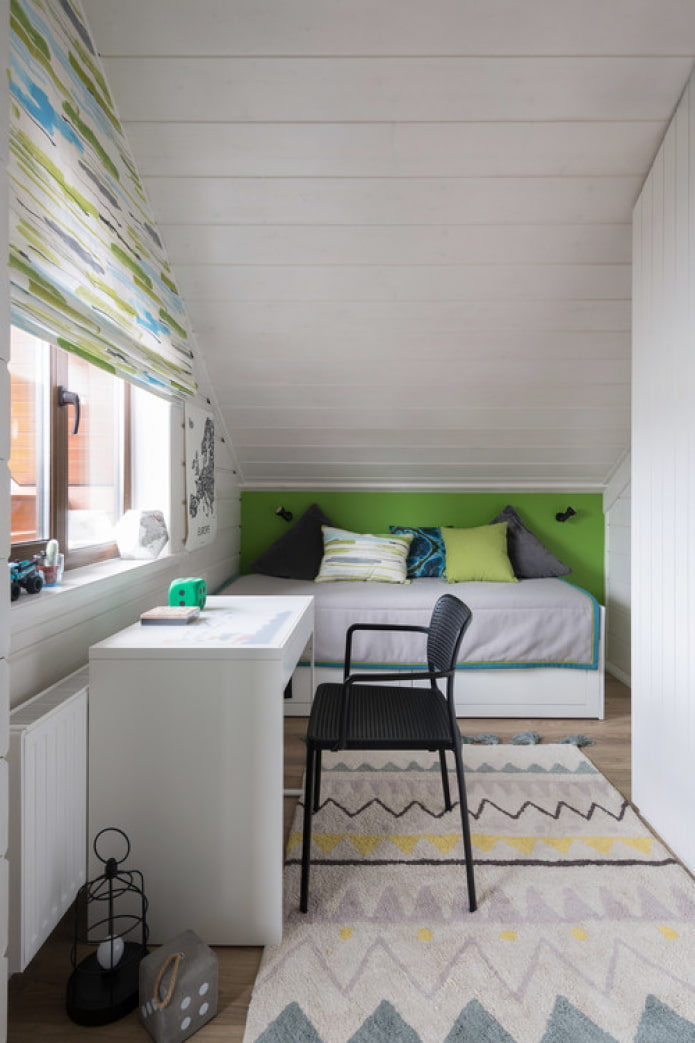

In a standard white interior, the floor is made medium (wood) or dark (tiles), considering light colors impractical. But this is the special charm, even luxury of a white floor. The main thing is to choose easy-to-care-for materials, such as porcelain stoneware, which is not afraid of being washed with aggressive agents.
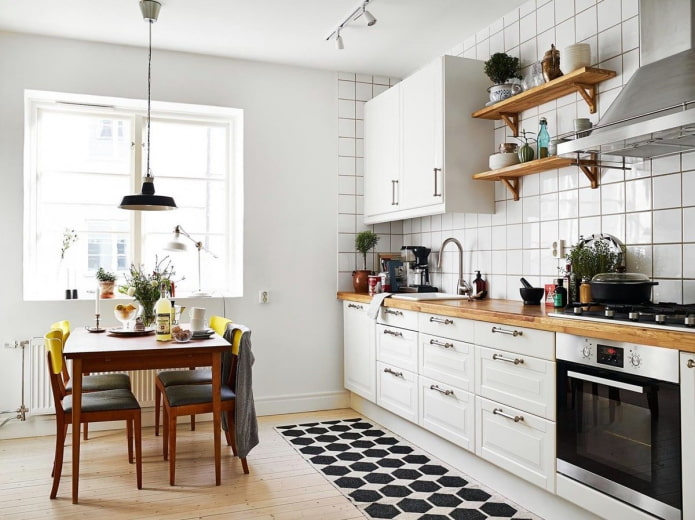
The photo shows a combination of tiles and paint
How do white textiles and decor look?
Creating an interior in white tones is not limited to decoration: decorative elements can also be made in this color.
For example, airy tulle is most often diamond or cream shade. You can also decorate the windows with thick curtains, blinds or Roman shades – they all look light and casual in alabaster.
In a white bedroom interior, plain bedding will be appropriate: it is easy to wash (can be bleached), it does not attract attention and looks modern. Textile options for the living room are blankets and sofa cushions of all possible shapes and sizes.
If both are made in white, the decor will remain relevant at any time of the year. Light details look best on a dark sofa, but will also work on light gray furniture.
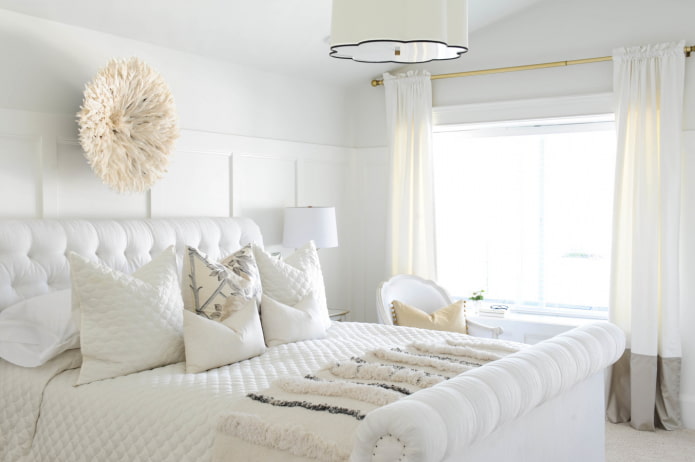
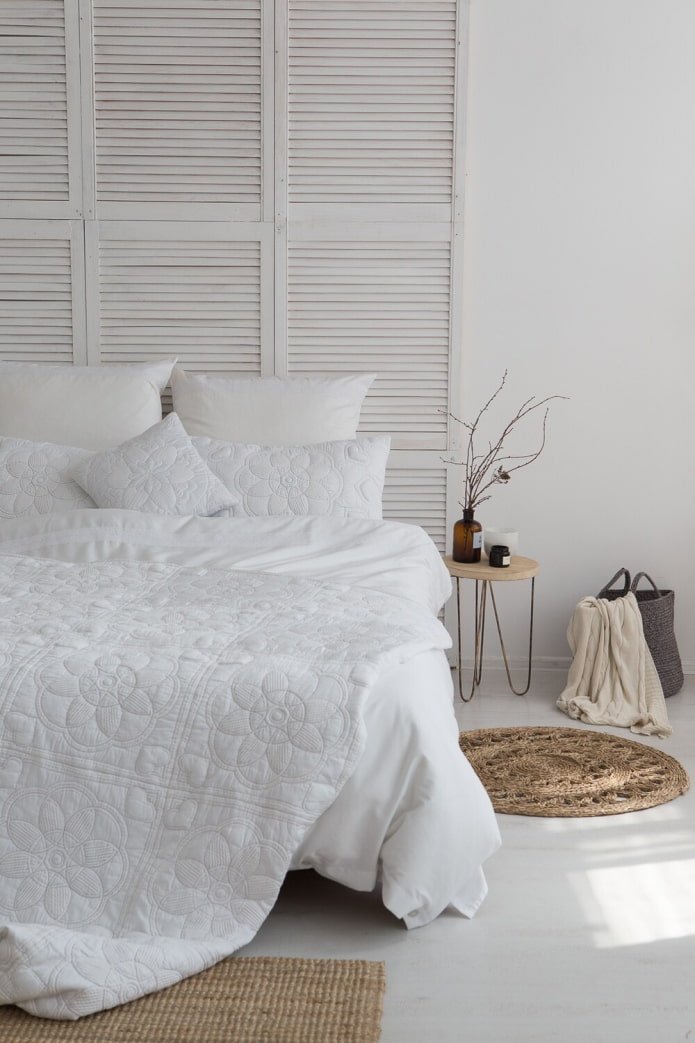

In a white interior, decor can be not only fabric: paintings or photos in frames with a passe-partout – a great option for decorating a wall. Snow-white vases, figurines, candles and other elements also create coziness.
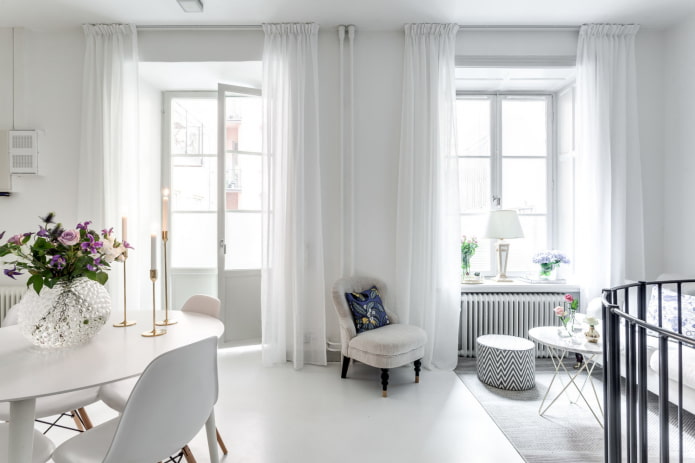
The photo shows light, airy tulle
What can you dilute it with?
If you don’t want to mix colors in a white interior, but you need to dilute the atmosphere, use textures and structures. Example: wood. Wooden furniture or its parts (kitchen countertop) harmonize perfectly with snow, making it warmer and cozier. Wicker elements (baskets, boxes) also look impressive on a light background.
Concrete or brick will be an excellent addition to a light-colored loft-style design. Concrete is left gray, and the brick can be either red for contrast or white – just to add texture.

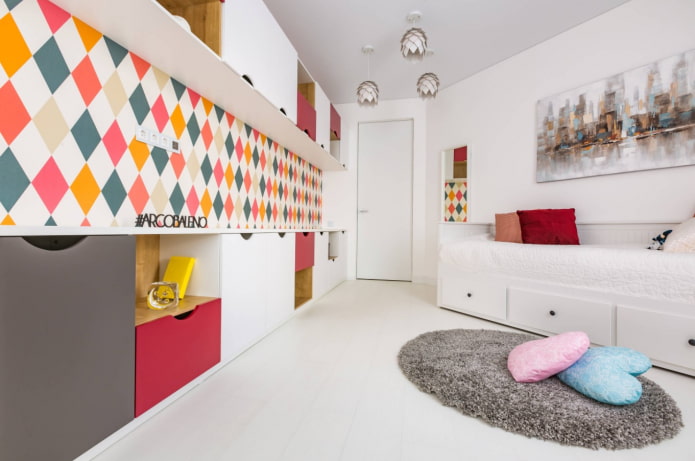
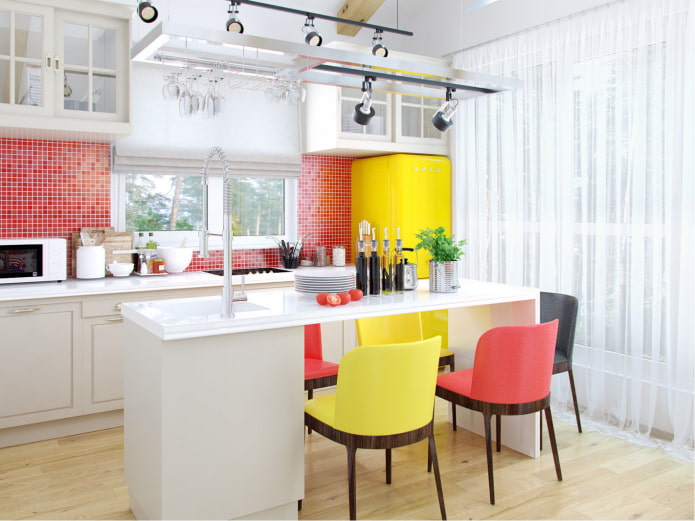
Don’t forget about fabrics: in white design, prints on pillows, carpets, blankets, curtains are appropriate. Drawings can be made on a white background, to preserve the air in the room, or be absolutely contrasting.
In addition to pronounced textures, there are also less noticeable ones: gloss, satin, matte. Even the same shade of coconut (for example) will be absolutely different in these three variations. Using different finishes is one of the main commandments of off-white design.
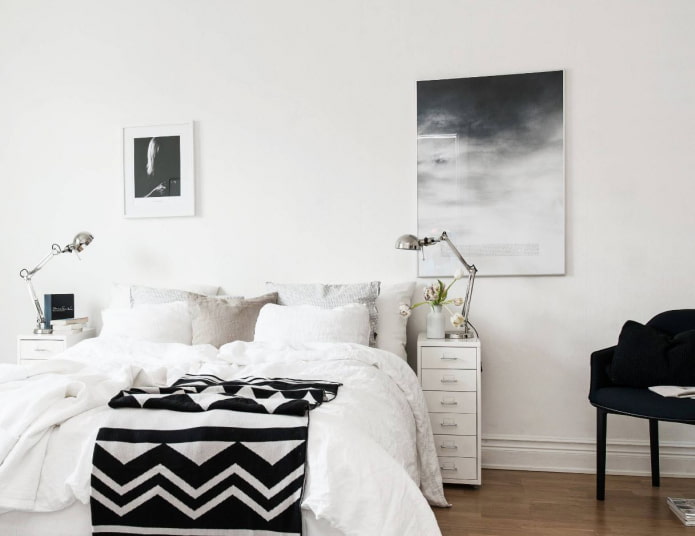

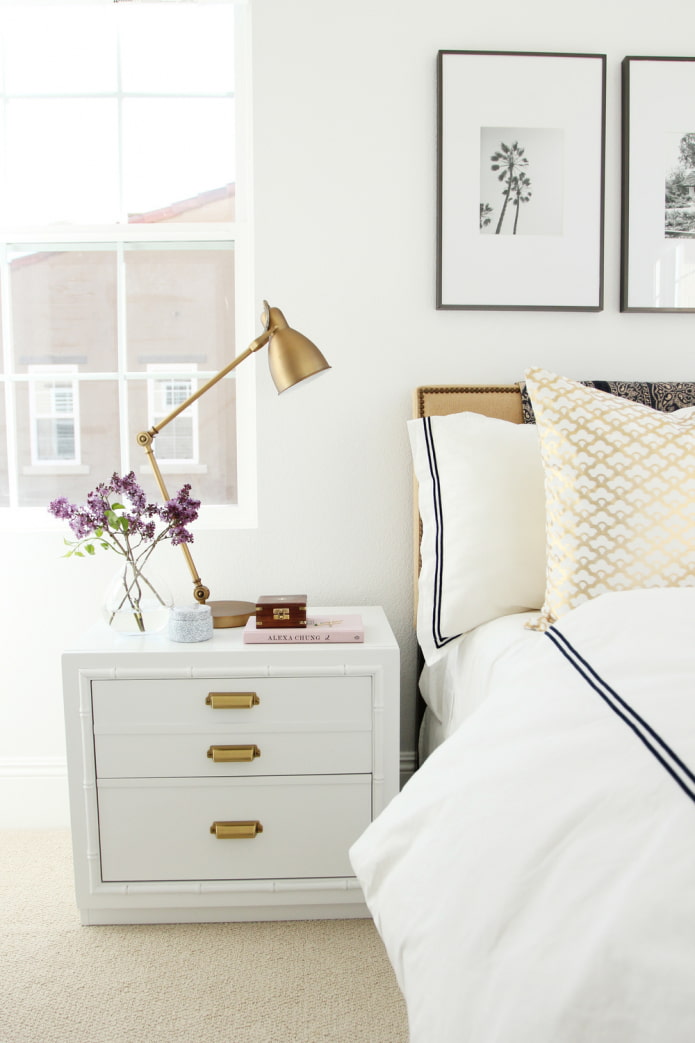
What styles is it suitable for?
When mentioning a white interior, the very first style that comes to mind is the one that comes to mind is Scandinavian. The people of Norway, Sweden and Denmark have really succeeded in using this range and we have something to learn from them. For example, the concept of creating a cozy space based on cold shades. But Scandi is not the only embodiment option.
Restraint off-white is the basis for minimalism. The shade of cleanliness and order is irreplaceable in the embodiment of the most modest, even cold design. Don’t overload the interior with decor, it’s better to leave it empty, as if unfinished.
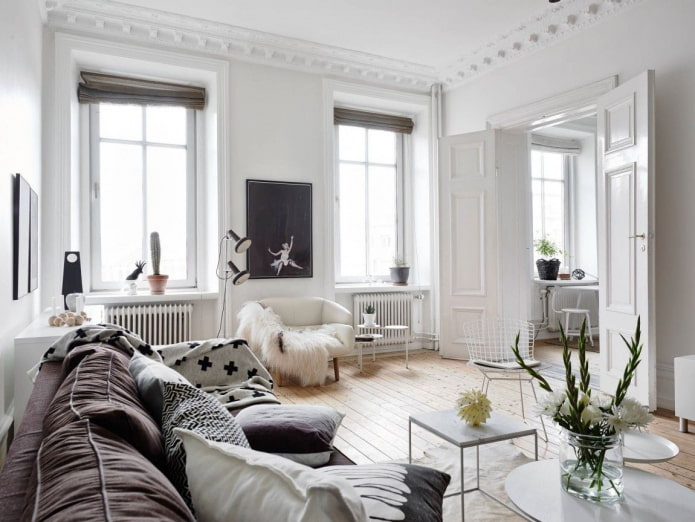

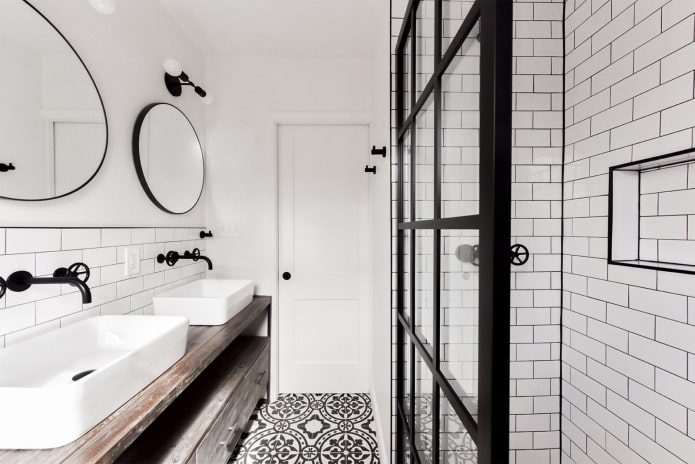
In classic design Warm undertones (ivory, antique, pearl) are irreplaceable. In combination with gold or bronze accents, you get a strict but luxurious design.
You shouldn’t write off the industrial, rough loft either. The options for using alabaster in it vary: from white brick walls to leather sofas against concrete surfaces.
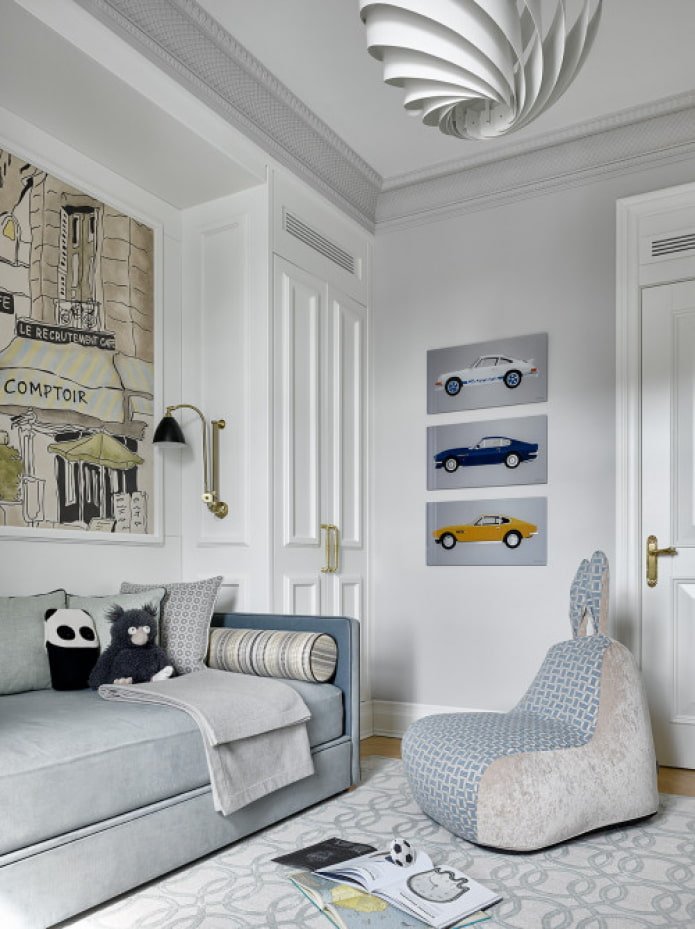

Examples of interior design
No matter which room you decorate in snow-white, each will look good. For example, the bedroom will be airy and spacious: light finishing creates a kind of “white noise” that allows you to relax after a hard day at work.
It is better not to leave the living room monochromatic; small accents are needed here for a more dynamic perception. But they do not necessarily have to be bright – beige, brown, gray, black tones will do.
In the kitchen, white is one of the most practical tones. Glossy light facades are easy to clean, and in terms of dirt resistance, they are in last place. The main thing is to choose high-quality plastic or paint – low-quality materials will turn yellow or green over time, losing their original whiteness.
For a tiny bathroom, where there is already snow-white sanitary ware, the shade will be a salvation. The bathtub, toilet and sink will literally dissolve against the walls, making the room visually larger.

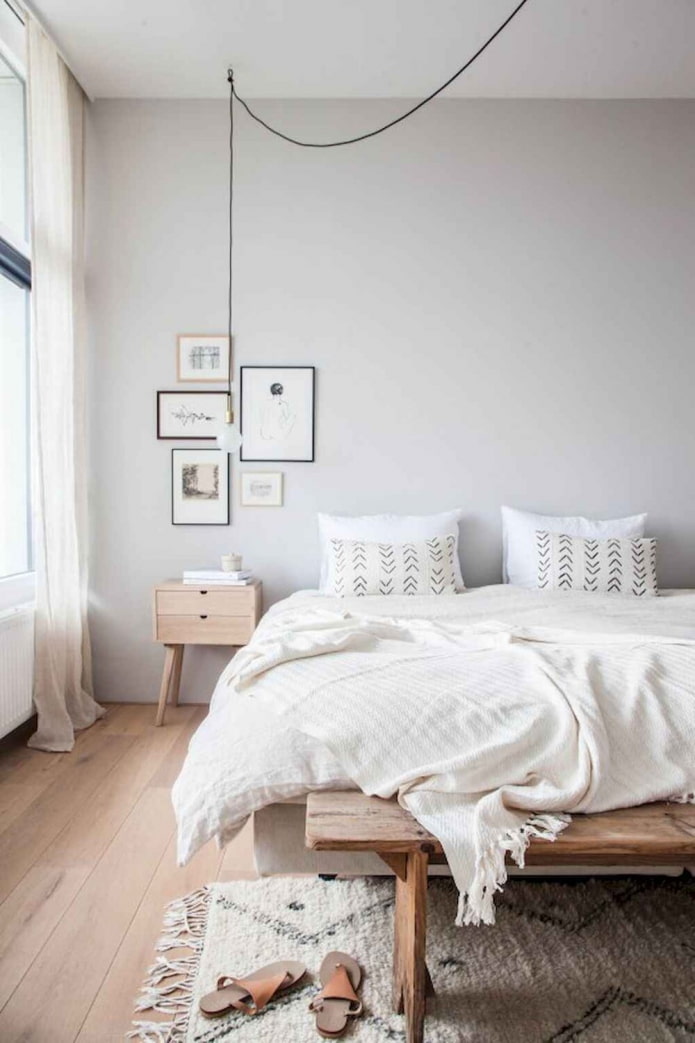
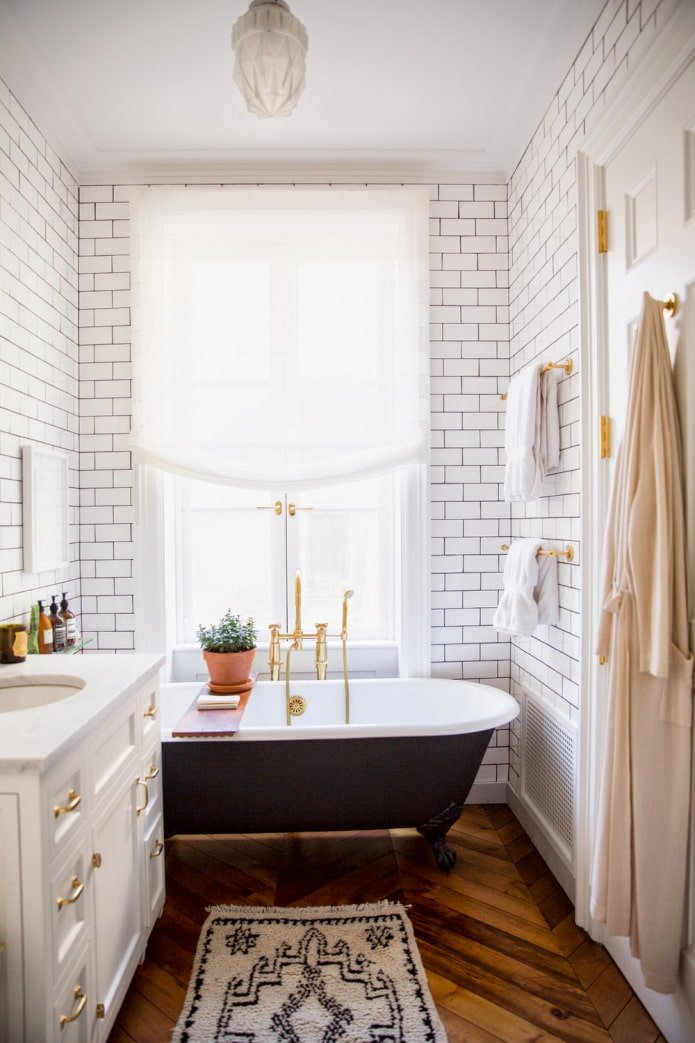
Snow-white finishes and furniture may seem unacceptable in the hallway. But if you choose the right materials (washable paint or wallpaper, glossy cabinet doors or matte ones without shagreen) – and the entrance to the apartment will be illuminated with light, and you will be able to take care of such luxury easily and naturally.
A nursery, like a living room, should not be made purely white – but here, bright, saturated tones are better suited as contrasts. Pink, blue, yellow, green, purple will create the right mood in the child’s room.
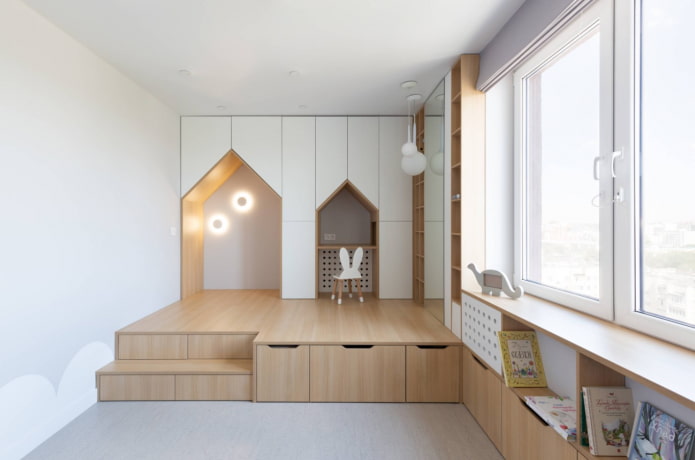
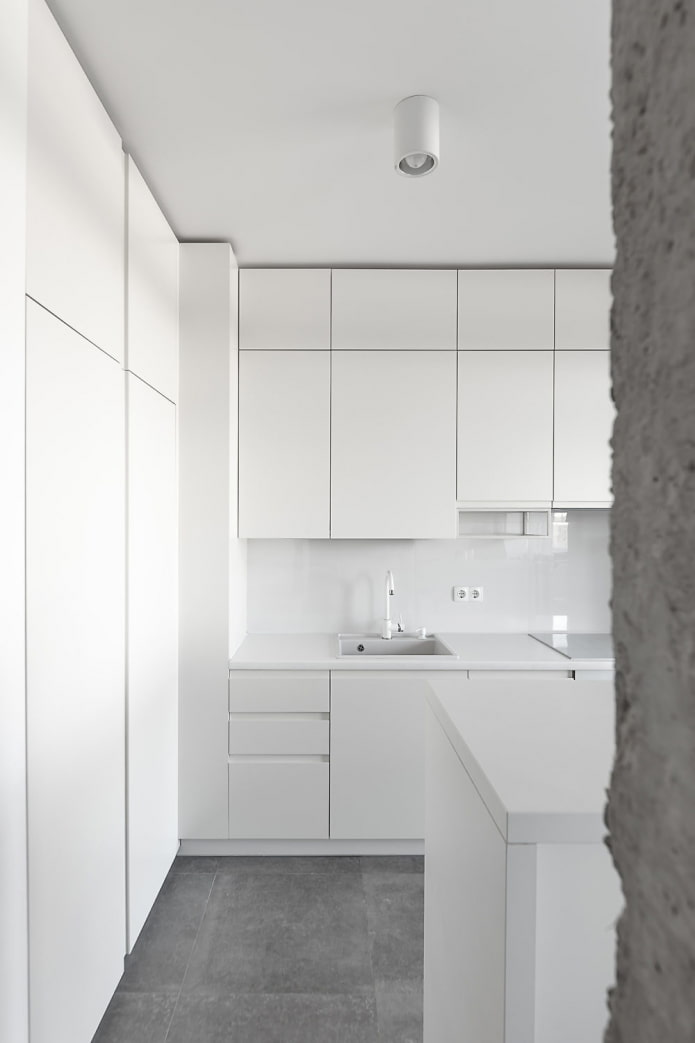

If you want to have a snow-white interior, do not be afraid of the myths that are formed about it color. Use it wisely and you will never regret your choice!
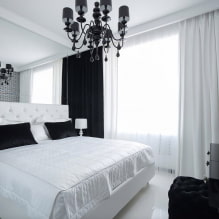
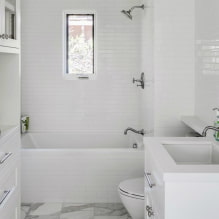
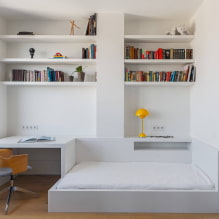
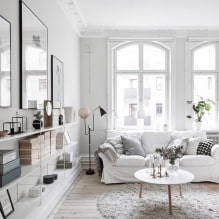
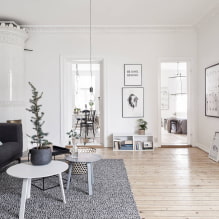
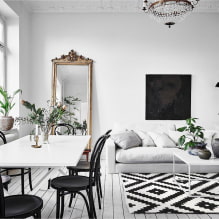
Now reading:
- Pink wallpaper: 90 photos for different rooms of your home.
- Comprehensive Guide for Buying a Used Peugeot 5008
- Parquet for an apartment: 70 best photos and interior design ideas
- Methods for painting a wooden floor: tips and step-by-step instructions.
- 10 Creative Solutions for Efficient Storage in a Narrow Hallway